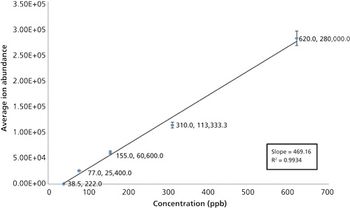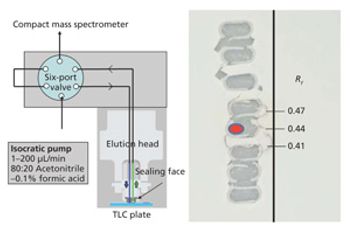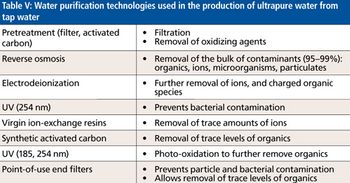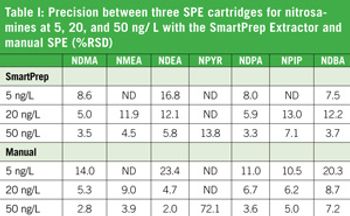Ionic contaminants in the water used in UHPLC analyses with MS detection method lead to adduct formation and reduced analytical signals because of ion suppression. In MS, the preferred ion type is the protonated molecular ion, especially in peptide analysis, since the partially mobile proton charge enables more meaningful fragmentation analysis, as compared to a sodiated peptide ion. Moreover, the occurrence of protonated analyte signals indicates that solvents and reagents, as well as the MS instrument used in analyses, are clean and do not contribute any contaminating cationic components to the analytical process. In the experiments presented here, it was observed that the signal intensities of the protonated species decreased as the sodium ion concentration in the water increased. This was accompanied by an increase in the intensity of sodiated adducts.








